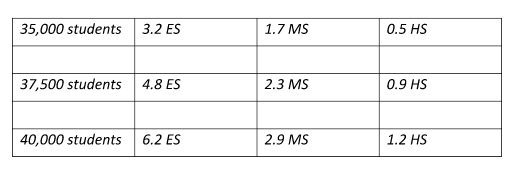![]() Peter’s Take is a weekly opinion column. The views and opinions expressed in this column are those of the author and do not necessarily reflect the views of ARLnow.com.
Peter’s Take is a weekly opinion column. The views and opinions expressed in this column are those of the author and do not necessarily reflect the views of ARLnow.com.
In two columns last fall, I asked: Does County government commit too much surplus revenue for spending?
Progress on unallocated closeout surplus
In his proposed FY 2019 budget, County Manager Mark Schwartz notes that he has whittled down the level of surplus funds available at closeout.
“[T]he amount of funds that are ‘discretionary’ for allocation at closeout have been reduced annually ($11.1 million in FY 2017, compared to $17.8 million in FY 2016 and $21.8 million in FY 2015). Of those closeout funds that have been made available, immediate spending has been limited to commitments already made by the Board or for emergency needs,” the budget wrote.
This is a positive step.
More budget reforms
However, of these closeout funds, the majority remaining after allocating the APS revenue-sharing portion is automatically allocated to “commitments already made by the Board.” Missing is a clear, written policy explaining how, when and why these other “commitments” were made.
The County Board essentially has allowed the manager to allocate/spend the remaining closeout funds without adequate opportunities for residents to weigh in on millions of dollars of spending.
The Civic Federation has asked that a fair and reasonable portion of surplus funds be plowed back into the coming-fiscal-year budget to reduce the need for a tax-rate increase. County officials, however, claim that best practices dictate that surplus funds be used only for “one-time” purposes since the county cannot rely on future surpluses to meet ongoing needs.
But there is no written, publicly available policy clearly defining what a “one-time” expenditure is, and this “one-time” money is often spent on recurring needs.
What experts say
At a County Board work session last spring, Public Financial Management, Inc. (PFM) described how other jurisdictions manage their fund balance accounts.
PFM noted that Fairfax, Loudoun and Prince William counties have a 10 percent operating/contingency reserve, twice Arlington’s level.
PFM also observed that:
- Arlington’s General Fund reserve policy levels are below the median level and among the lowest in the triple-A group (Arlington’s bond-rating peer group).
- FY 2016 is the second consecutive year of decline in the General Fund balance ratio, and this could begin to concern Moody’s, if it becomes a trend.
More County Board oversight
Too often, committed and allocated funds are established in the fund balance with substantial cash accumulating over time, apparently with little or no monitoring of the reasonableness of the balances. New York State’s Local Government Management Guide on Reserve Funds warns against this.
“Reserve funds should not be merely a ‘parking lot’ for excess cash or fund balances,” the guide wrote.
The County Board should answer questions like these:
- Has the financial purpose served by each reserve fund been identified and published?
- Has a written reserve fund policy been developed and published?
- Has the Board reviewed all reserve funds currently established, and determined if the balances in each are reasonable?


-600x600.jpg)



